The future of delivery services is rapidly evolving, with delivery robots and drones operating in cities worldwide. These innovations aim to bring convenience to our everyday lives, as evidenced by the launch of Samsung C&T Engineering and Construction Group’s pilot robot delivery service in Seoul.
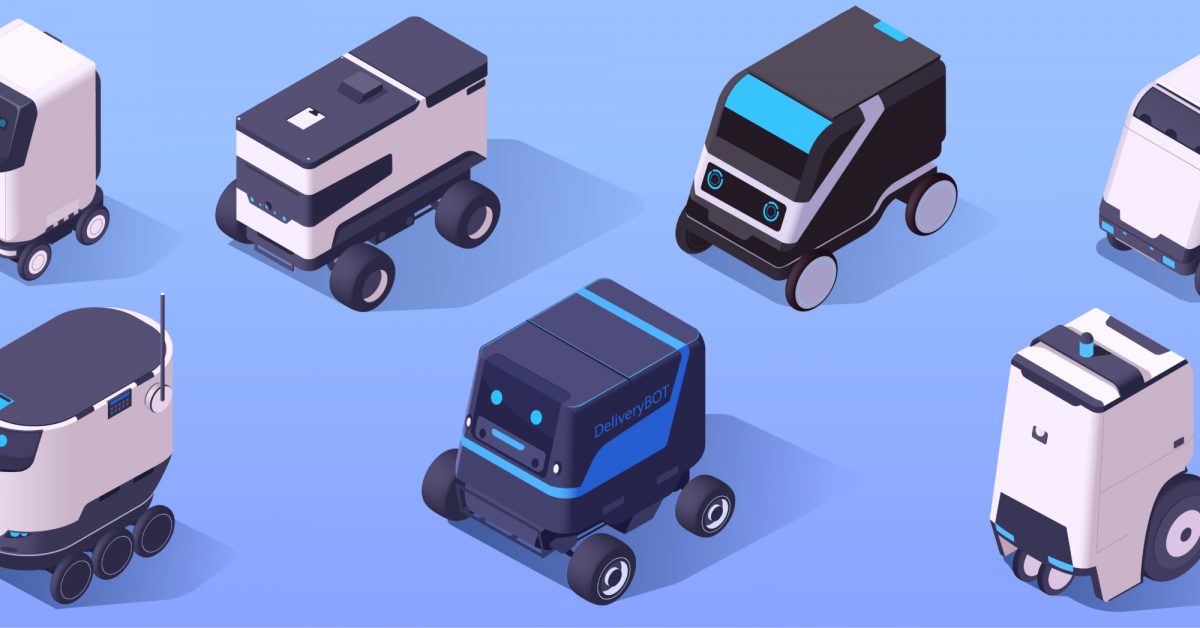
In cities around the world, waiting three to five business days for an online order to be delivered is a thing of the past. You no longer need to rush to your favorite restaurant to satisfy a sudden craving, as food delivery drivers can be seen cruising around towns, bringing meals to our front doors with the tap of a button.
From drones delivering packages in our skies to autonomous robots navigating through neighborhoods to bring coffee to your door, the future of delivery convenience is shaping up to be high-tech.
Samsung C&T Engineering and Construction (E&C) Group launched a robot delivery service at its premium Raemian Leaders One apartment complex in Seoul, South Korea. A similar service is already active in cities in the United States. Let’s take a closer look at the autonomous solutions that could soon shape the future of our everyday lives.
Meet the Different Types of Service Robots
This article will look at two different types of service robots: delivery robots on wheels and delivery drones that travel via the sky.

Delivery Robots on Wheels
Many types of robots on wheels have been implemented in service industries to make people’s lives easier. For example, some restaurants have replaced wait staff with robots to deliver food to diners. Another example is delivery robots on wheels that deliver food and packages by traveling outdoors on sidewalks.
How do Delivery Robots Work?
Robots designed for the service industry can sometimes be seen roaming through restaurants or public spaces with ease. So, how do they work? Delivery Robots are equipped with cameras, sensors, and GPS monitors to help them navigate and avoid collisions with people, cars, and obstacles.
With mapping technology, delivery robots can accurately navigate to their destination. They also use cameras to detect obstacles, such as people, prompting the robots to stop or take a different path. Some delivery robots also use machine learning to help them make decisions, adapting their learned experiences to future scenarios. The technology used to help delivery robots navigate allows them to operate safely in restaurants and city streets.
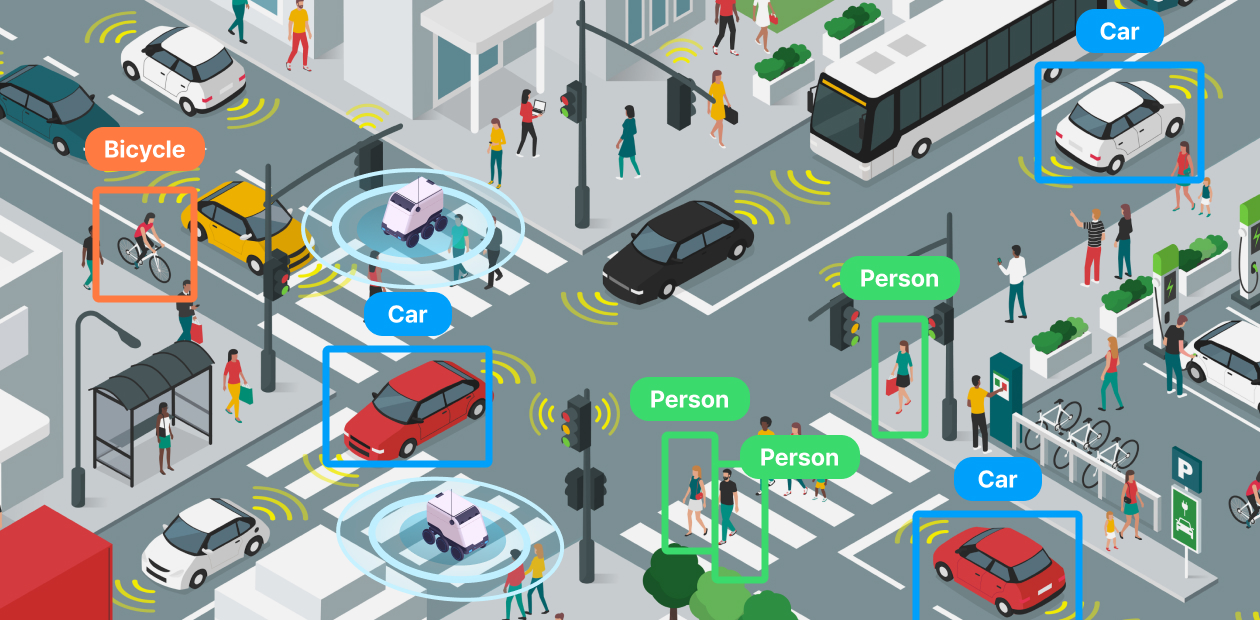
Autonomous Driving
Autonomous delivery robots can operate by themselves. Autonomous driving has a classification system with six levels to determine the robot’s level of automation. For example, a Level 4 classification means the robot or vehicle is ‘highly autonomous,’ meaning it can operate without human assistance. Level 0 has no automation, and Level 5, the highest level, is completely autonomous (a level that currently does not exist outside of science fiction).
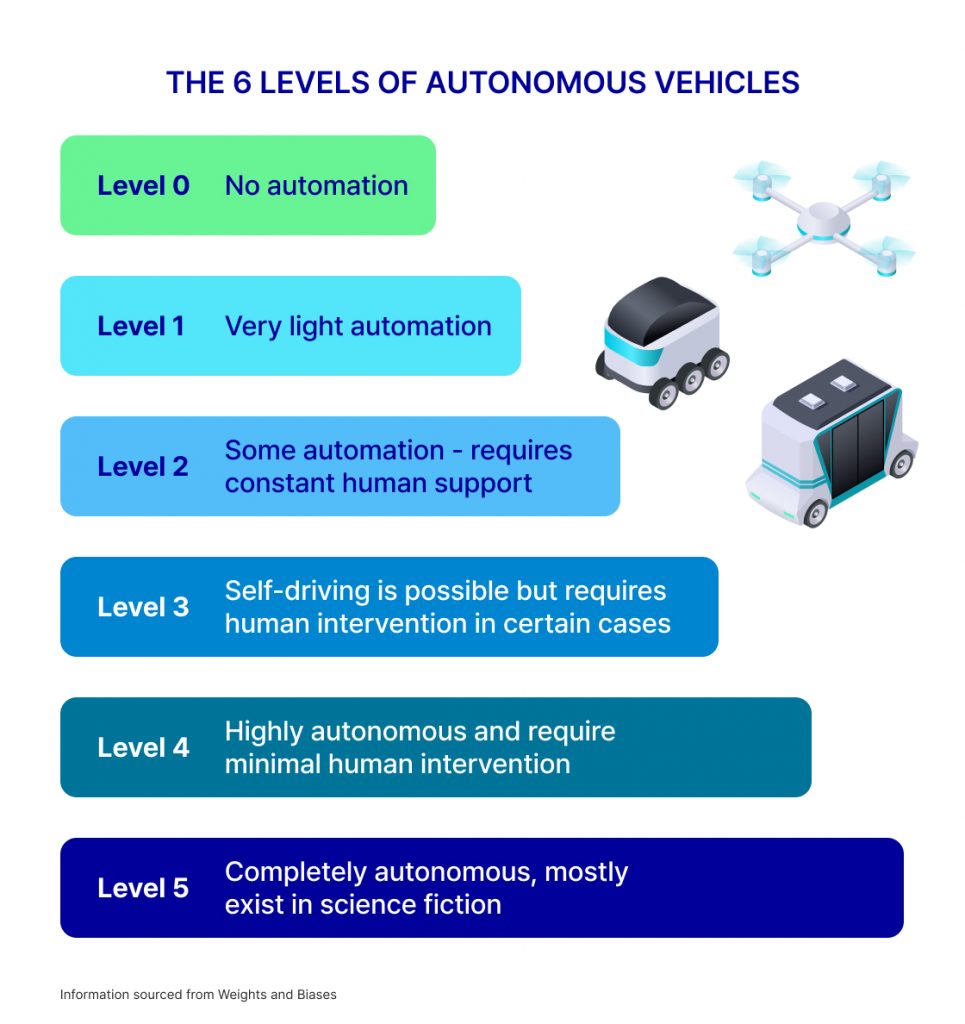
Delivery Robots by Serve Robotics
Serve Robotics Level 4 Autonomous Delivery Robots are currently deployed in the United States. The adorable robots feature a set of round eyes at the front of their body, offering a friendly face to locals collecting their delivery food orders. They deliver food to neighborhoods in Los Angeles, and the company plans to deploy more than 2,000 robots on the sidewalks of cities in the United States by 2026.
With their level 4 autonomy classification, the delivery robots can handle food delivery routes without human intervention. However, if they face barriers that they are not prepared for such as construction sites, a human will assist the robot remotely. This innovative robot is helping pave the way for a new era of mobility in the United States.

As demand for more convenient delivery of food, retail products, and healthcare items, the robot delivery industry could expand. A report from 2023 projected that the delivery robot market could grow to USD 1.8 billion by 2028 from USD 0.4 billion in 2023. According to the same report, in 2022, roughly 56% of the total robot delivery market share belonged to the food and beverage industry. We could expect to see more delivery robots appearing in our neighborhoods in the near future.
Delivery Drones
Delivery drones are unmanned aerial vehicles (UAVs) designed to carry parcels to customers via the sky. Drone technology could revolutionize the delivery of everyday items like food and groceries and could change the way people receive essential lifesaving medicines or supplies in remote locations.
Amazon Air, Amazon’s cargo delivery airline division, already operates delivery drones in two U.S. states, California and Texas. The company hopes to expand its drone delivery to customers in the UK by the end of 2024, allowing customers to receive packages within an hour of making an online purchase.
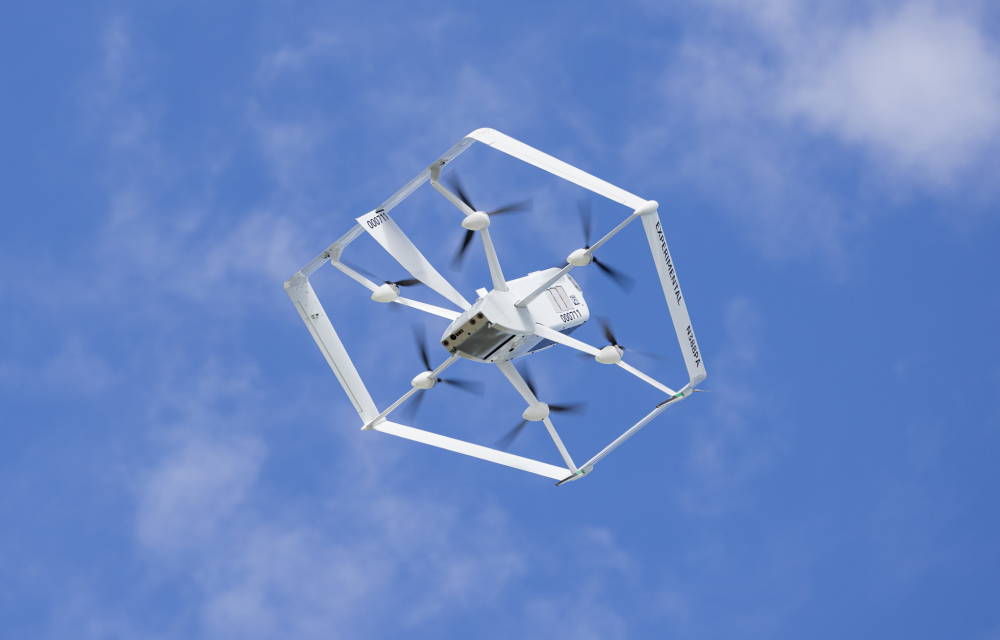
South Korea: The Country of Convenience
South Korea has long been known for its ultra-convenient and efficient urban cities. Food delivery apps operate around the clock to deliver tasty meals to locals while residents are never too far from a convenience store. Robots are being introduced into the service industry in restaurants and being “hired” as baristas making your morning coffee, quickly becoming an ordinary part of daily life in South Korea. With all this innovation, the deployment of robots on sidewalks was recently made possible in South Korea.
Legal Amendment Opens the Door for Innovation
In November 2023, the Korean Government amended its Intelligent Robots Development and Distribution Promotion Act, enabling autonomous robots to operate in outdoor environment. This amendment, which highlights safety standards for robots operating in public spaces, has opened opportunities to implement delivery and patrol solutions using outdoor autonomous robots.
Samsung C&T Engineering and Construction Launch Robot Delivery for Apartment Residents
In June 2024, Samsung C&T E&C Group announced the launch of a robot delivery service at its premium Raemian Leaders One apartment complex in Seoul’s Gangnam region. With new regulations allowing autonomous robots on sidewalks in Seoul, residents of Samsung C&T E&C’s Raemian Leaders One apartment can now order food and beverages from restaurants and cafes in their neighborhood with their phones.
The project is a collaboration with Neubility, an autonomous robot company based in South Korea. The Neubility robots use Visual simultaneous localization and mapping (V-SLAM) technology to capture visual data around them to create a 3D map of their surroundings. The robots can then use this map to guide themselves autonomously through streets, helping them avoid obstacles.
Samsung C&T E&C is planning to run pilot operations until September before introducing new services. Based on the success of the project at Raemian Leaders One, Samsung C&T E&C hopes to bring the autonomous robot service to more apartment complexes and expand the business to include parcel delivery to provide convenience to residents.
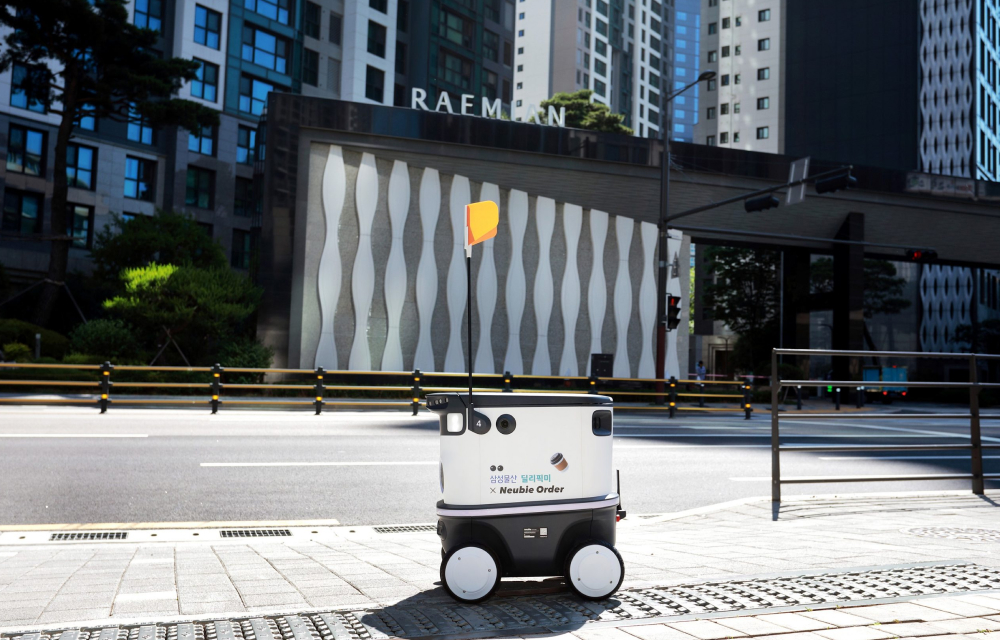
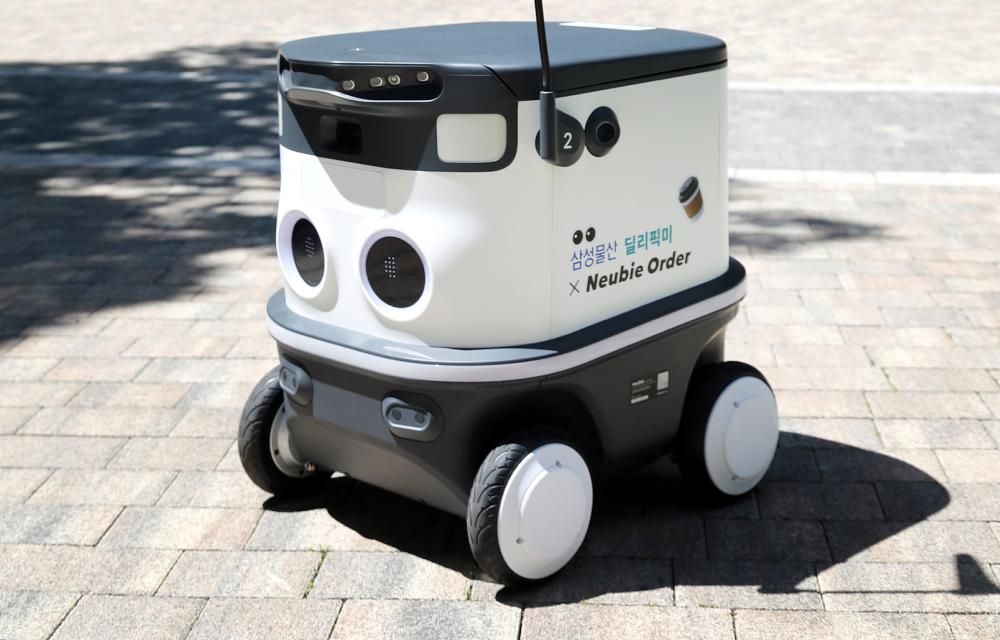
Everything is Coming Up Robots
Exciting robot delivery technology shows promise for the future. Samsung C&T E&C’s launch of its robot delivery project in Seoul makes it clear that the technology of the future is already here. This technology can make our lives more convenient and addresses solutions for people with accessibility issues or who require additional support to deliver food or medicine to their front doors. It is exciting to imagine a world where technological solutions can provide equitable access to an improved quality of life.







